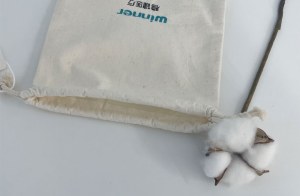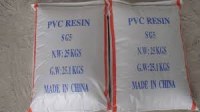Non-woven Bags vs Plastic Bags
Quantity : 4700TON /m Price : $6.5-7.5USD/KG
Raw Material for Non-Woven Bags Manufacturing
The raw materials of non-woven bags are not made of traditional yarns that are interwoven and knitted one by one. Instead, it is mainly a fabric made by orienting or randomly arranging short fibers or filaments to form a fiber network structure, and then using some physical methods such as mechanical and thermal bonding or other chemical methods to reinforce it. Non-woven bags are moisture-proof, breathable, flexible, light and thin, flame-retardant, non-toxic and tasteless, low in price, and recyclable. A wide range of fiber raw materials can be used to make non-woven bags, such as cotton, hemp, wool, asbestos, glass fiber, viscose fiber (rayon), and synthetic fibers (including nylon, polyester, acrylic, polyvinyl chloride, etc.). At present, man-made fibers still dominate the raw material production of non-woven bags.
Are Non-Woven Bags Eco Friendly
When non-woven bags were born, they were declared to be environmentally friendly bags by merchants. This is true to a certain extent because compared with disposable plastic bags, non-woven bags can be reused several times. But when it comes to the raw materials for making non-woven fabrics, they are not completely environmentally friendly. Currently, most nonwovens are made from polypropylene and polyester, both of which are forms of plastic resulting from refining crude oil. Pollution can occur throughout the process of making plastic, including when crude oil is collected and refined. Pollution can come in the form of oil spills, as well as air pollution from greenhouse gas emissions and soil and water contamination due to chemicals leaching or improper disposal.
Also, since crude oil is a non-renewable resource and neither polypropylene nor polyester is biodegradable, non-woven bags made from these two raw materials are not a sustainable and biodegradable option either.
For the most environmentally friendly option, look for non-woven bags made from natural raw materials like cotton. Cotton is a natural and sustainable material that is not only durable but also easy to wash. Cotton is also a biodegradable natural material. In an industrial composting environment, cotton can become a natural fertilizer after about 120 days.
Difference between Non-woven Bags vs Plastic Bags
The differences between non-woven fabrics and plastic bags are mainly reflected in the following points.
Eco-friendliness:
Single-use plastic bags are a well-known source of white pollution. At present, many countries and regions around the world have reached a consensus and launched actions to limit and ban plastic bags. The European Union issued a directive on plastic restrictions in 2015. The goal is that by the end of 2019, people in EU countries will consume no more than 90 plastic bags per person per year, and by 2025, this number will be reduced to 40. After the directive was issued, all member states embarked on the road of plastic restriction. Influenced by the European Union, other countries around the world have also issued different plastic restriction policies. Non-woven bags produced by non-woven bag manufacturer made from natural materials are the most environmentally friendly alternative to single-use plastic bags. Enterprises have begun to specify strategies to try to give users an environmentally friendly brand impression, which is part of how enterprises can contribute to CSR. Many retail stores and businesses have already switched from using single-use plastic bags to non-woven bags, which will make users more interested.
Raw Materials:
As mentioned above, the raw materials of non-woven bags mainly include viscose fiber, polyester fiber, polypropylene fiber, ES fiber and so on. The raw material of plastic bags is polyethylene. Although it looks similar to polypropylene, it is quite different in chemical structure. The chemical molecular structure of polyethylene is quite stable and extremely difficult to degrade, so it takes 300 years for plastic bags to decompose. However, the chemical structure of polypropylene is not strong, and the molecular chain is easily broken. Compared with polyethylene, it is easier to enter the degradation cycle.
Durability and Printing:
The significant difference between the two types of bags is their physical integrity. When figuring out the integrity of the bag, we can check for characteristics such as the degree of tearing, breakage, and stretching. Comparing two different bag materials, plastic bags are always easy to tear. Providing non-woven bags to your customers will help you earn their trust among them. Furthermore, the effectiveness of non-woven bags in printing and branding cannot be ignored. While custom printing is possible on these two different bag materials, it works better on non-woven bags than on plastic bags. Non-woven bags have greater retention when it comes to retaining design prints. Plastic bag prints don't last long and will fade over time.
Winner Nonwovens uses 100% cotton as raw material to produce spunlace non-woven fabric and then makes high-quality and durable non-woven bag, we provide customized services in various sizes and patterns, welcome to consult.
Winner Medical, as an excellent organic sanitary pad manufacturer, offers a wide range of cotton napkin for you to choose from.
Contact : er winn, +86(0)755 2813 8888
Good deal: buying from seller
We invite you to read our terms of use. You can also visit our FAQ section and see our information section on the risks associated with counterfeiting.
|
This page is about importers and exporters of Non-woven Bags vs Plastic Bags Search in a category : Everything else / Bulk Search in a category : plastic, bags, woven |
Friday, May 16, 2014
Quantity : 50000pcs - Price : $1-25/pc
Prototype Description SLA and SLS Why Use Stereolithography? Stereolithography is very similar to the SLS(Selective Laser Sintering) prototyping process.It's best to use SLA,when surface finish and overall appearance straight from the machine is the most important factor in the prototype...
Xiamen Karo Co.,Ltd
- karoplastic
- 361002 - Xiamen
- 0086 592 5135406
Monday, July 20, 2015
matières plastiques recyclées maroc, vente, polyéthylène haute et basse densité, polypropylène, polyester, plastique, recyclée, régénérée, granulée, fournisseurs, distributeurs, importateurs, producteurs, grossistes, import, export. Société italienne spécialisée en production...
impresa in marocco sarl
- 20000 - CASABLANCA
- 06 29 90 85 75
Thursday, October 08, 2015
Price : 900euros
Product Description 1, PVC Resin 2, Molecular Formula: (C2H3CL)n 3, CAS number: 9002-86-2 4, Type: SG3, SG5, SG8 5. Appearance: White powder or white speck, 6. Viscosity number/(ml/g): 114 (or K value) 68-66 or degree of polymerization 1135-981 PVC Resin Specification: Suspension...
SA BANGKOK IMPORT AND EXPORT LTD
- 10110 - Bangkok
- +66 9 40 61 68 72









